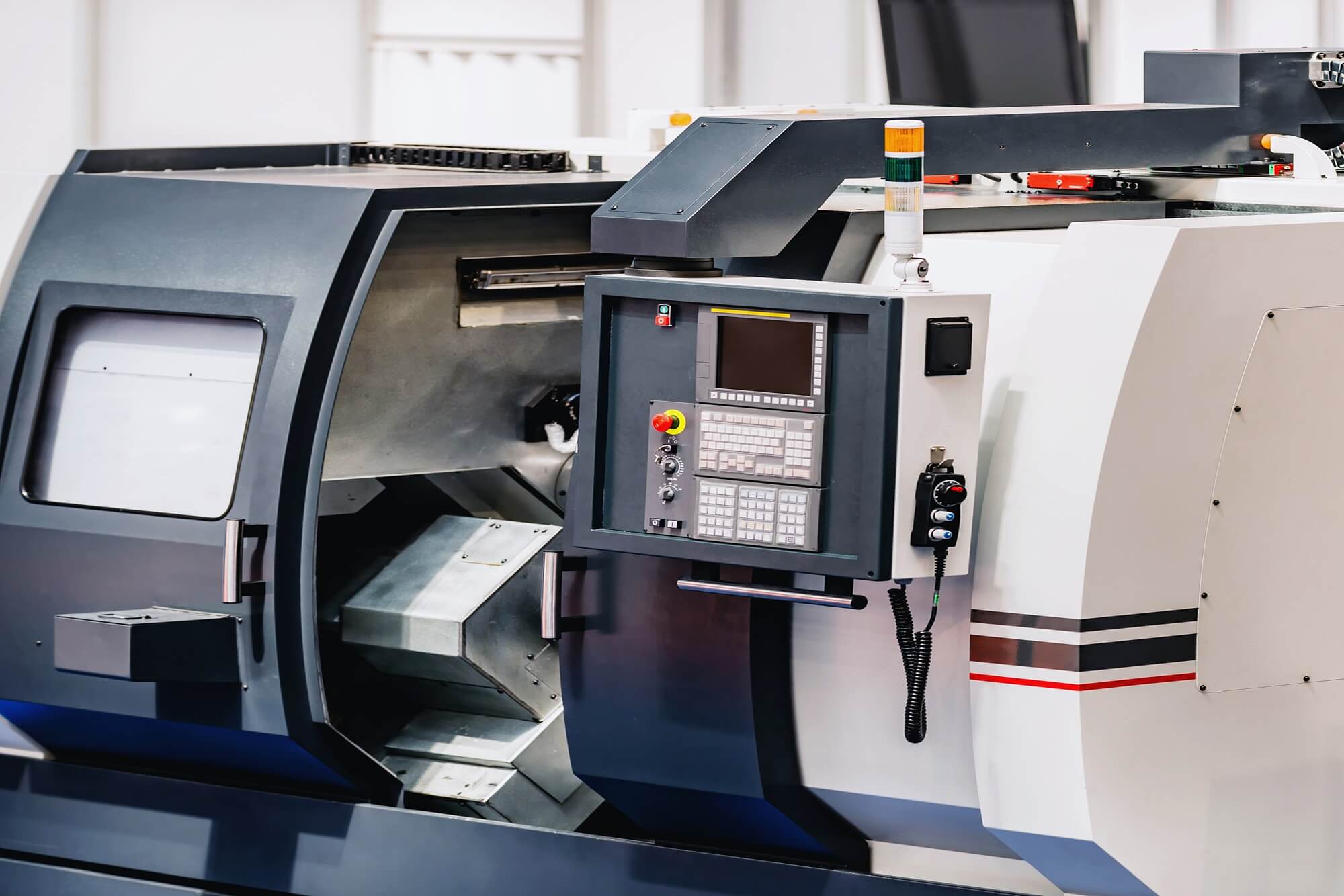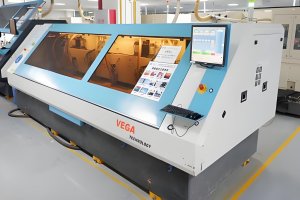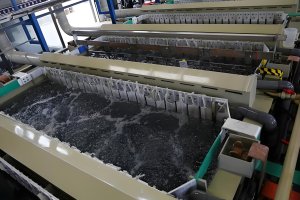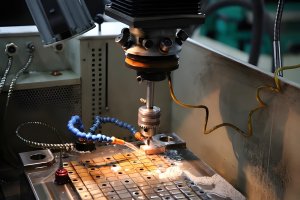The Backbone of Modern Manufacturing:
As a manufacturing enthusiast who’s spent years marveling at the capabilities of CNC lathe machines, I can attest that these devices are the heartbeat of precision production. A CNC lathe machine transforms raw materials into intricate components with astonishing accuracy, making it a cornerstone of CNC machining. This guide dives into the mechanics, applications, software, and future trends of CNC lathe machines, blending technical depth with insights from my own journey in the industry to inspire manufacturers, engineers, and curious minds alike.
What is a CNC Lathe Machine? Unpacking the Technology
A CNC lathe machine, or Computer Numerical Control lathe, is a marvel of engineering that uses computer-driven instructions to shape materials by rotating a workpiece against a cutting tool. Unlike manual lathes, which demand an operator’s constant attention, CNC lathe machines deliver precision and repeatability through digital code. In my early days as a shop floor apprentice, I watched skilled machinists wrestle with manual lathes, but the arrival of CNC machining revolutionized our workflow, slashing errors and boosting output. These machines are now vital for crafting cylindrical parts across industries, from aerospace to consumer electronics, showcasing the power of CNC machining in modern production.
Core Mechanics: How CNC Lathe Machines Redefine Precision
At its essence, a CNC lathe machine operates through “turning,” where a workpiece spins rapidly in a chuck while a cutting tool shapes it. This process supports operations like turning (reducing diameter), facing (flattening surfaces), drilling, boring, threading, and grooving—all within a single setup. I recall my first encounter with a CNC lathe machine on a factory floor: the spindle’s hum and the tool’s precise dance were mesmerizing, producing a flawless shaft in minutes. This digital precision eliminates human error, making CNC machining scalable and globally consistent, as programs can be shared instantly across facilities.
The Automated Workflow: From Digital Design to Finished Part
The magic of a CNC lathe machine lies in its automated process, which I’ve seen streamline production firsthand. The workflow unfolds in clear steps:
- Programming: A 3D CAD model is converted into G-code using CAM software, defining the toolpaths for the CNC lathe machine.
- Setup: Operators prepare the machine, securing the workpiece and tools. I’ve spent hours fine-tuning setups to ensure zero deviation.
- Execution: The CNC lathe machine autonomously follows the G-code, carving the part with precision.
- Inspection: Parts are measured against specs, often using digital calipers, a task I’ve grown to appreciate for its rigor.
This process, rooted in CNC machining, ensures every part meets exacting standards, saving time and resources.
Inside a CNC Lathe Machine: Key Components Driving Performance
A CNC lathe machine is a symphony of components engineered for precision. Here’s a breakdown based on my observations:
Drivetrain: The Powerhouse
The headstock contains the motor, gears, and spindle, which spins the workpiece via a chuck. I’ve seen spindles handle everything from delicate aluminum to tough titanium, where rigidity is crucial for the surface finish in CNC machining.
Workholding: Chucks and Collets
Chucks grip the workpiece with hydraulic jaws, while collets offer precision for smaller parts. During a project involving micro-components, I learned that collets in a CNC lathe machine ensure unmatched concentricity, critical for electronics.
Support Structure: Bed and Tailstock
The cast iron bed absorbs vibrations, while the tailstock supports long workpieces. I once worked on a 2-meter shaft where the tailstock’s stability was a game-changer, preventing flexing during CNC machining.
Action Center: Carriage and Tool Turret
The carriage moves along the Z-axis, with the turret indexing tools rapidly. Watching a turret switch tools in seconds during a complex job taught me the efficiency of CNC lathe machines.
Control System: The Digital Brain
The CNC control system interprets G-code, while the operator interface allows real-time adjustments. I’ve spent late nights tweaking programs on a CNC lathe machine to perfect a part’s geometry.
Support Systems: Coolant and Chip Management
Coolant keeps the cutting zone lubricated, and chip conveyors clear debris. I’ve seen clogged conveyors halt production, underscoring their importance in continuous CNC machining.
CNC Lathe Machines vs. Manual Lathes: A Paradigm Shift
Having operated both, I can say CNC lathe machines outshine manual lathes in precision and productivity. CNC machining achieves tolerances of 0.001 mm, far beyond the 0.01 mm of manual lathes, which rely on operator skill. Repeatability is flawless with CNC lathe machines, producing identical parts every time—a must for high-volume runs. They also handle complex geometries, unlike manual lathes, which struggle with intricate designs.
Economically, CNC lathe machines reduce labor costs; one operator can manage multiple units, a stark contrast to the hands-on demands of manual lathes. While the upfront cost of a CNC lathe machine is high, the ROI from faster production and minimal waste is undeniable. For small shops, manual lathes suit one-offs, but CNC machining dominates for scale and complexity.
Table 1: CNC Lathe Machine vs. Manual Lathe Comparison
| Feature | CNC Lathe Machine | Manual Lathe |
| Precision | Up to 0.001 mm | ~0.01 mm, skill-dependent |
| Repeatability | Near-perfect | Variable, operator-dependent |
| Complexity | High, intricate designs | Simple geometries |
| Speed | Fast, automated | Slow, manual |
| Labor | One operator, multiple machines | Skilled machinist per machine |
| Cost | High initial, low per part | Low initial, high per part |
| Application | High-volume, complex parts | One-offs, repairs |
Types of CNC Lathe Machines: Tailored for Every Task
CNC lathe machines vary widely, each designed for specific CNC machining needs:
- Horizontal CNC Lathe Machines: Ideal for shafts and long parts, these are the workhorses I’ve seen dominate automotive lines.
- Vertical CNC Lathe Machines (VTLs): Perfect for heavy, disc-shaped parts, leveraging gravity for stability.
- 2-Axis CNC Lathe Machines: Basic turning for simple parts like bushings, which I’ve used for quick prototypes.
- 3-Axis CNC Lathe Machines: Add live tooling for milling, a feature I’ve relied on for complex fittings.
- 4/5-Axis CNC Lathe Machines: Enable off-center and angled features, ideal for aerospace components I’ve worked on.
- Swiss-Type CNC Lathe Machines: Excel at slender, intricate parts like medical screws, requiring precision I’ve marveled at.
- Multi-Spindle CNC Lathe Machines: Handle front and back machining in one go, streamlining high-volume CNC machining.
Table 2: Guide to CNC Lathe Machine Types
| Type | Features | Applications | Complexity |
| 2-Axis CNC Lathe Machine | X, Z axes | Shafts, bushings | Low |
| 3-Axis CNC Lathe Machine | C-axis, live tooling | Cross-drilling, milling | Medium |
| 4/5-Axis CNC Lathe Machine | Y/B-axis | Complex contours | High |
| Vertical CNC Lathe Machine | Vertical spindle | Large rings, housings | Low-Medium |
| Swiss-Type CNC Lathe Machine | Guide bushing | Slender, intricate parts | High |
| Multi-Spindle CNC Lathe Machine | Sub-spindle, multi-turret | High-volume, done-in-one | Very High |
Industry Applications: Where CNC Lathe Machines Shine
CNC lathe machines drive innovation across sectors, as I’ve witnessed in various projects:
- Aerospace: Producing turbine blades from titanium with CNC machining precision ensures safety and performance.
- Automotive: Mass-producing gears and camshafts, where CNC lathe machines ensure consistency, has been a staple in my experience.
- Medical: Swiss-type CNC lathe machines craft tiny bone screws, a process I’ve seen meet stringent biocompatibility standards.
- Electronics: CNC machining creates connectors and heat sinks with sub-micron precision, critical for device reliability.
The Digital Workflow: From Concept to Reality
The precision of CNC lathe machines hinges on a digital pipeline:
- CAD Design: Tools like Fusion 360 create detailed models, a process I’ve used to design custom parts.
- CAM Toolpaths: CAM software generates G-code, which I’ve tweaked to optimize CNC machining efficiency.
- G-Code Execution: G-codes (tool movements) and M-codes (auxiliary functions) drive the CNC lathe machine, a language I’ve grown fluent in.
- Simulation: Virtual testing prevents errors, saving costly reworks, as I learned after a near-miss early in my career.
Buying a CNC Lathe Machine: A Strategic Investment
Choosing a CNC lathe machine requires careful planning. Assess workpiece size, complexity, and materials to match your needs. Spindle power, axis count, and accuracy specs are critical—my team once chose a 5-axis CNC lathe machine for its versatility, future-proofing our shop. Brand reputation and after-sales support are non-negotiable; a reliable service network saved us during a spindle issue. Budget for total cost of ownership, including tooling and software, which can add 20% to the price. Used CNC lathe machines can be cost-effective but need thorough inspection, a lesson I learned after a costly repair.
Maintenance and Safety: Keeping CNC Lathe Machines Running
A proactive maintenance plan ensures CNC lathe machine reliability. Daily checks of coolant and guards, weekly filter cleaning, monthly chuck lubrication, and annual alignment keep machines humming. Safety is paramount: I always enforce PPE like safety glasses and ban gloves to avoid spindle entanglement, a risk I’ve seen cause near-accidents. Operator training is critical, as I’ve learned from mentoring new machinists in CNC machining safety protocols.
Table 3: CNC Lathe Machine Maintenance Schedule
| Frequency | Mechanical Checks | Electrical Checks | Fluids & Lubrication |
| Daily | Clean guideways, check guards | Test emergency stop | Monitor coolant, hydraulics |
| Weekly | Clear chip buildup | Inspect cables | Check for leaks |
| Monthly | Lubricate chuck, check belts | Verify switches | Assess coolant condition |
| Annually | Align machine, test backlash | Tighten connections | Replace oils, clean tank |
The Future of CNC Lathe Machines: Embracing Industry 4.0
The CNC lathe machine is becoming a smart factory cornerstone. IoT sensors and AI enable predictive maintenance and real-time optimization, reducing downtime in projects I’ve overseen. Robotic automation, including cobots, supports “lights-out” CNC machining, addressing labor shortages I’ve seen firsthand. Hybrid CNC lathe machines, blending additive and subtractive processes, are pushing boundaries, creating parts I once thought impossible. These advancements make CNC machining a dynamic field, with CNC lathe machines at its core.
Conclusion: The Enduring Impact of CNC Lathe Machines
From my first encounter with a CNC lathe machine to witnessing its evolution, I’m convinced it remains vital to manufacturing. Its precision, driven by CNC machining, transforms ideas into reality with unmatched efficiency. As CNC lathe machines embrace AI, robotics, and hybrid technologies, they’re not just tools—they’re partners in innovation, shaping the future of Industry 4.0.
FAQ:
1. What is a CNC lathe machine, and how does it work?
A CNC lathe machine is a computer-controlled device that shapes materials by rotating a workpiece against a cutting tool. In CNC machining, it uses G-code to automate tasks like turning, drilling, and threading. From my experience on the shop floor, the machine’s spindle spins the material while the tool, guided by precise digital instructions, creates complex parts with tolerances as tight as 0.001 mm, making it a cornerstone of modern manufacturing.
2. How does a CNC lathe machine differ from a manual lathe?
A CNC lathe machine offers superior precision, repeatability, and speed compared to a manual lathe. While manual lathes rely on operator skill and are limited to simpler parts, CNC machining with a CNC lathe machine automates complex geometries and reduces labor. I’ve seen CNC lathe machines produce identical parts across thousands of cycles, something impossible with manual methods due to human variability.
3. What industries rely on CNC lathe machines?
CNC lathe machines are vital in aerospace, automotive, medical, and electronics industries. For example, I’ve worked on projects where CNC machining produced titanium aerospace components and intricate medical screws. These machines excel at creating precise, repeatable parts like turbine blades, camshafts, bone screws, and electronic connectors, meeting the high standards of each sector.
4. What types of CNC lathe machines are available?
There are several types of CNC lathe machines, including:
- 2-Axis CNC Lathe Machines: For basic turning, like shafts.
- 3-Axis CNC Lathe Machines: Add live tooling for milling and drilling.
- 4/5-Axis CNC Lathe Machines: Handle complex, off-center features.
- Vertical CNC Lathe Machines (VTLs): Ideal for heavy, disc-shaped parts.
- Swiss-Type CNC Lathe Machines: Perfect for slender, intricate components.
- Multi-Spindle CNC Lathe Machines: Enable “done-in-one” machining.
In my experience, choosing the right type depends on part complexity and production volume.
5. What is the role of G-code in CNC machining?
G-code is the programming language that controls a CNC lathe machine. It includes commands for tool movements (G-codes) and auxiliary functions like spindle speed (M-codes). I’ve spent hours tweaking G-code to optimize toolpaths, ensuring the CNC lathe machine produces parts efficiently without errors, a critical step in CNC machining.
6. How do I choose the right CNC lathe machine for my business?
Selecting a CNC lathe machine involves assessing workpiece size, material, and complexity. Consider spindle power, axis count, and accuracy specs. I once helped a shop pick a 5-axis CNC lathe machine for its versatility, which paid off in diverse projects. Also, prioritize brand reputation and after-sales support to minimize downtime, as I learned when a service delay cost us a week of production.
7. What maintenance is required for a CNC lathe machine?
Regular maintenance keeps a CNC lathe machine reliable. Daily tasks include checking coolant and safety guards; weekly, clean chip buildup; monthly, lubricate the chuck; and annually, verify alignment. I’ve seen neglected maintenance lead to costly repairs, so a proactive schedule is essential for uninterrupted CNC machining.
Reference:
https://en.wikipedia.org/wiki/Lathe;
https://www.archute.com/cnc-lathe-machine/;
https://www.cnctraining.gr/en/activities/blog/272-cnc-turning-the-fundamentals-you-need-to-know;
https://en.wikipedia.org/wiki/Computer_numerical_control;
Other Articles You Might Enjoy
- Precision Machining with Tool Offsets for CNC Lathe Parts
When it comes to CNC machining, precision is key. Achieving high precision in CNC lathe parts requires a deep understanding of tool offsets and their functions. Let's dive into the…
- Creative Lathe Projects: Transform Ideas into Real Creations
I. Introduction Lathes are one of the most versatile tools in any workshop. Whether you’re crafting a wooden bowl, turning a precision metal part, or experimenting with CNC designs, lathe…
- Which Is the Most Expensive CNC Machine?
Today, there are hundreds, if not thousands, of CNC machines on the market, and their machining costs range based on a number of factors. Custom machining allows users to tailor…
- Harbor Freight Lathe: A Beginner’s Guide to Machining Basics
Introduction: Why Choose a Harbor Freight Lathe? I remember the first time I wanted to try my hand at metalworking. I didn’t have a huge budget, and I needed a…
- What is a Turret Lathe? Comprehensive Guide for Beginners and Professionals
Introduction to Turret Lathe If you’ve ever worked in manufacturing or machining, you’ve likely come across the term turret lathe. This machine, known for its versatility and efficiency, bridges the…






